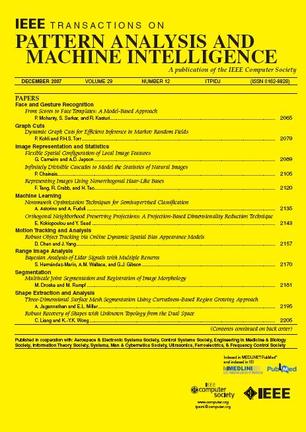Human Motion Generation: A Survey
IF 20.8
1区 计算机科学
Q1 COMPUTER SCIENCE, ARTIFICIAL INTELLIGENCE
IEEE Transactions on Pattern Analysis and Machine Intelligence
Pub Date : 2023-07-20
DOI:10.48550/arXiv.2307.10894
引用次数: 0
Abstract
Human motion generation aims to generate natural human pose sequences and shows immense potential for real-world applications. Substantial progress has been made recently in motion data collection technologies and generation methods, laying the foundation for increasing interest in human motion generation. Most research within this field focuses on generating human motions based on conditional signals, such as text, audio, and scene contexts. While significant advancements have been made in recent years, the task continues to pose challenges due to the intricate nature of human motion and its implicit relationship with conditional signals. In this survey, we present a comprehensive literature review of human motion generation, which, to the best of our knowledge, is the first of its kind in this field. We begin by introducing the background of human motion and generative models, followed by an examination of representative methods for three mainstream sub-tasks: text-conditioned, audio-conditioned, and scene-conditioned human motion generation. Additionally, we provide an overview of common datasets and evaluation metrics. Lastly, we discuss open problems and outline potential future research directions. We hope that this survey could provide the community with a comprehensive glimpse of this rapidly evolving field and inspire novel ideas that address the outstanding challenges.人体动作生成:调查
人体运动生成旨在生成自然的人体姿势序列,在现实世界的应用中显示出巨大的潜力。近来,运动数据采集技术和生成方法取得了长足进步,为人类运动生成领域日益增长的兴趣奠定了基础。该领域的大部分研究都集中在根据条件信号(如文本、音频和场景背景)生成人体运动。虽然近年来取得了重大进展,但由于人体运动的复杂性及其与条件信号之间的隐含关系,这项任务仍然面临着挑战。在本调查报告中,我们对人类运动生成进行了全面的文献综述,据我们所知,这在该领域尚属首次。我们首先介绍了人体运动和生成模型的背景,然后研究了三个主流子任务的代表性方法:文本条件、音频条件和场景条件人体运动生成。此外,我们还概述了常见的数据集和评估指标。最后,我们讨论了尚未解决的问题,并概述了潜在的未来研究方向。我们希望这份调查报告能为社会各界提供对这一快速发展领域的全面了解,并启发新的想法,以解决悬而未决的挑战。
本文章由计算机程序翻译,如有差异,请以英文原文为准。
求助全文
约1分钟内获得全文
求助全文
来源期刊
CiteScore
28.40
自引率
3.00%
发文量
885
审稿时长
8.5 months
期刊介绍:
The IEEE Transactions on Pattern Analysis and Machine Intelligence publishes articles on all traditional areas of computer vision and image understanding, all traditional areas of pattern analysis and recognition, and selected areas of machine intelligence, with a particular emphasis on machine learning for pattern analysis. Areas such as techniques for visual search, document and handwriting analysis, medical image analysis, video and image sequence analysis, content-based retrieval of image and video, face and gesture recognition and relevant specialized hardware and/or software architectures are also covered.

 求助内容:
求助内容: 应助结果提醒方式:
应助结果提醒方式:


